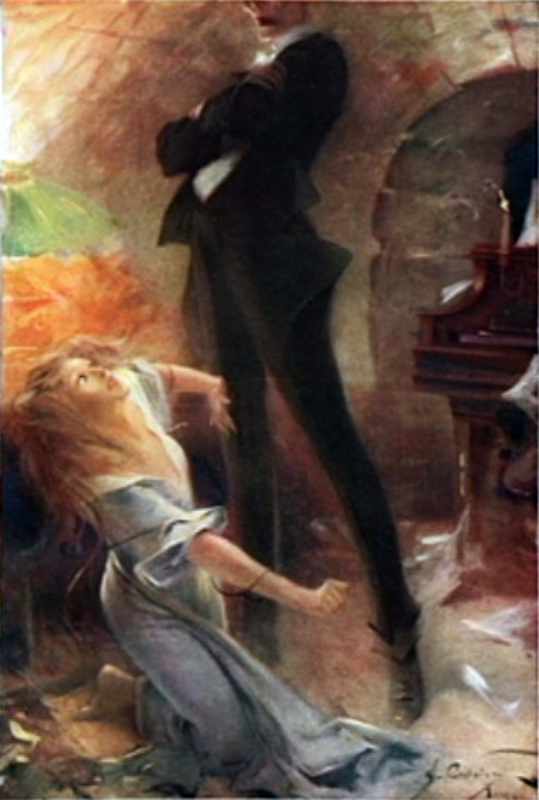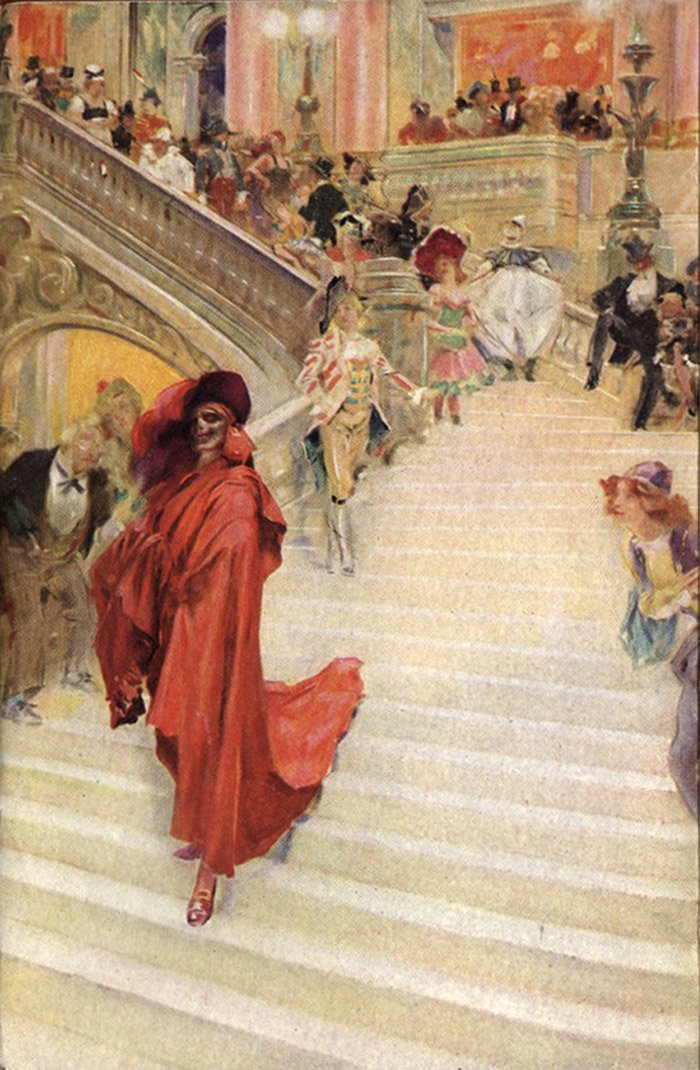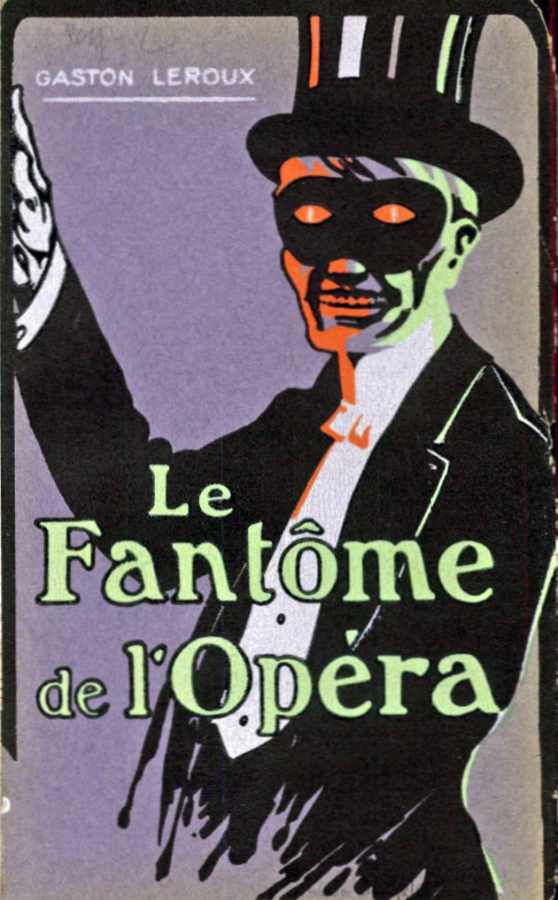Erik (also known as The Phantom of the Opera, commonly referred to as The Phantom) is the title character from Gaston Leroux’s 1910 novel Le Fantôme de l’Opéra, best known to English speakers as The Phantom of the Opera. In the original novel, few details are given regarding Erik’s past. The novel confirms that Erik has traveled to multiple countries including France, Russia, Persia, and northern Vietnam, learning various arts and sciences from each region. Erik himself laments the fact that his mother was horrified by his birth deformity, and that his father, a true master mason, never saw him. Most of the character’s history is revealed by a mysterious figure, known through most of the novel as The Persian or the Daroga, who saved Erik’s life in Persia, and followed Erik to Paris; other details are discussed in the novel’s epilogue (e.g., his birthplace is given as a small town outside of Rouen, France). In the novel, Erik often refers to himself in the third person, a detail that didn’t make it into any subsequent adaptations. In the original novel, Erik is described as corpse-like and is referred to as having a “death’s-head” (human skull) throughout the story. He has no nose, and his eyes are sunken so deep in his skull that all that is seen are two eye sockets, except when his yellow eyes glow in the dark. His skin is yellowed and tightly stretched across his bones, and only a few wisps of dark brown hair are behind his ears and on his forehead. His mouth is never described in as much detail, but is referred to as a “dead mouth” by Christine, and Erik acknowledges that his mouth is abnormal when lifting up his mask to display ventriloquism. He is described as extremely thin, so much so that he resembles a skeleton. Christine graphically describes his cold, bony hands, which also either feel or smell like death. There is debate among both English and French speakers as to whether the original French word used here, sentir, was intended by Leroux to mean “smells like” or “feels like,” as the French word is used for both feel and smell depending on the context. Erik woefully describes himself to Christine as a corpse who is “built up with death from head to foot.” According to the Persian, Erik was born with this deformity and was exhibited as le mort vivant in freak shows earlier in his life. Erik sometimes plays up his macabre appearance, such as sleeping in a coffin as if he is a vampire, he also costumes as the titular character from Edgar Allan Poe’s The Masque of the Red Death for the masked ball.
| Alias Phantom of the Opera |
| Real Names/Alt Names Erik |
| Characteristics Villain, Musician, Wold Newton Universe, Ghost-themed, Master of Illusion, Belle Époque, French, Italian |
| Creators/Key Contributors Gaston Leroux |
| First Appearance “Le Fantôme de l’Opéra” in Le Gaulois (23 September 1909 to 8 January 1910) |
| First Publisher ○ |
| Appearance List Magazine: “Le Fantôme de l’Opéra” in Le Gaulois (23 September 1909 to 8 January 1910). Novel: Le Fantôme de l’Opéra (1910). Film: Das Phantom der Oper (1916), The Phantom of the Opera (1925), Song at Midnight (1937), Phantom of the Opera (1943). |
| Sample Read The Phantom of the Opera [Internet Archive] |
| Description Erik (also known as The Phantom of the Opera, commonly referred to as The Phantom) is the title character from Gaston Leroux’s 1910 novel Le Fantôme de l’Opéra, best known to English speakers as The Phantom of the Opera. In the original novel, few details are given regarding Erik’s past. The novel confirms that Erik has traveled to multiple countries including France, Russia, Persia, and northern Vietnam, learning various arts and sciences from each region. Erik himself laments the fact that his mother was horrified by his birth deformity, and that his father, a true master mason, never saw him. Most of the character’s history is revealed by a mysterious figure, known through most of the novel as The Persian or the Daroga, who saved Erik’s life in Persia, and followed Erik to Paris; other details are discussed in the novel’s epilogue (e.g., his birthplace is given as a small town outside of Rouen, France). In the novel, Erik often refers to himself in the third person, a detail that didn’t make it into any subsequent adaptations. In the original novel, Erik is described as corpse-like and is referred to as having a “death’s-head” (human skull) throughout the story. He has no nose, and his eyes are sunken so deep in his skull that all that is seen are two eye sockets, except when his yellow eyes glow in the dark. His skin is yellowed and tightly stretched across his bones, and only a few wisps of dark brown hair are behind his ears and on his forehead. His mouth is never described in as much detail, but is referred to as a “dead mouth” by Christine, and Erik acknowledges that his mouth is abnormal when lifting up his mask to display ventriloquism. He is described as extremely thin, so much so that he resembles a skeleton. Christine graphically describes his cold, bony hands, which also either feel or smell like death. There is debate among both English and French speakers as to whether the original French word used here, sentir, was intended by Leroux to mean “smells like” or “feels like,” as the French word is used for both feel and smell depending on the context. Erik woefully describes himself to Christine as a corpse who is “built up with death from head to foot.” According to the Persian, Erik was born with this deformity and was exhibited as le mort vivant in freak shows earlier in his life. Erik sometimes plays up his macabre appearance, such as sleeping in a coffin as if he is a vampire, he also costumes as the titular character from Edgar Allan Poe’s The Masque of the Red Death for the masked ball. |
| Source Phantom of the Opera – Public Domain Super Heroes Wiki |



